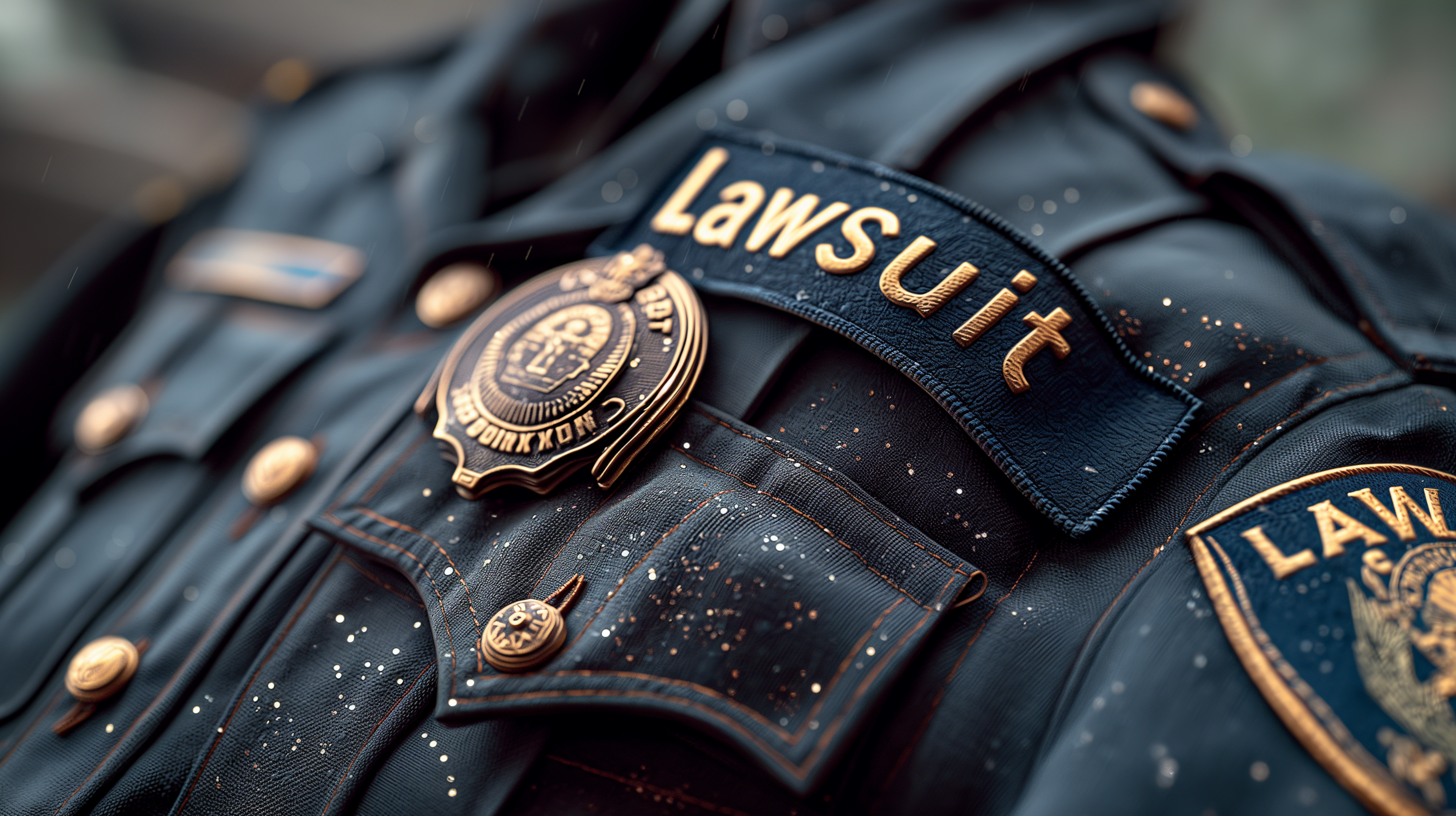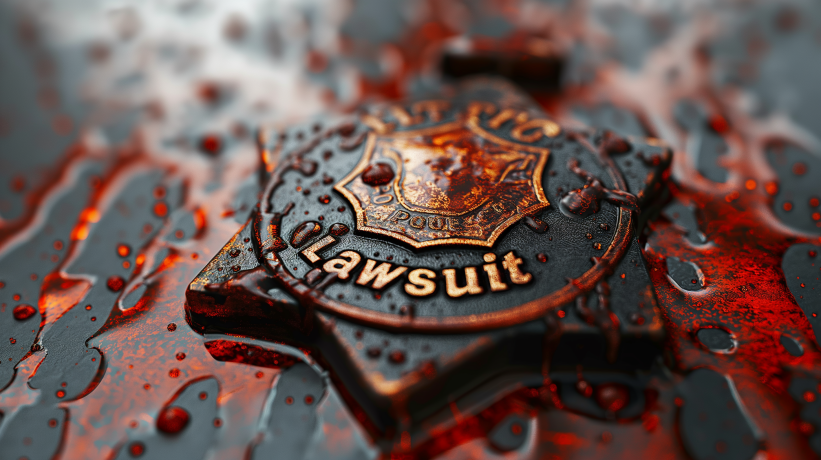
A lawsuit filed by former Denver police recruit Victor Moses alleges he lost both legs after being beaten and forced to continue in a brutal training ritual known as "Fight Day." The case raises disturbing questions about the culture of violence and lack of accountability in police training.
by LawInc Staff
July 31, 2024
The recent lawsuit filed by Victor Moses against the City and County of Denver, Denver police officers, and Denver Health medical staff contains shocking allegations of excessive force, failure to intervene, and deliberate indifference to his serious medical needs during a Denver Police Academy training called “Fight Day.” The case raises important issues about police brutality, abuse of power, and the rights of recruits during training.
This guide provides an overview of the key facts, legal claims, parties involved, and potential ramifications of this high-profile civil rights case.
1. Understand the Key Facts Alleged
-
- Plaintiff Victor Moses: A Black 27-year-old Denver Police recruit with sickle cell trait who joined the academy in 2022.
- Fight Day Event: A mandatory four-stage training on January 6, 2023 involving violent encounters with officers role-playing suspects.
- Repeated Collapses: Moses passed out multiple times after being hit in the head and knocked down in stage 2.
- Forced to Continue: Despite losing consciousness and mobility, he was made to keep fighting in subsequent stages.
- Catastrophic Injuries: Moses suffered organ damage, rhabdomyolysis, compartment syndrome and loss of both legs.
Key Allegations in the Complaint:
-
- Moses was repeatedly assaulted by multiple Denver police officers during stage 2, causing him to fall and hit his head on the hard floor.
- He lost consciousness several times, experienced extreme fatigue and cramping, had very low blood pressure, and was unable to stand.
- Despite these obvious signs of medical distress, on-scene Denver Health paramedics “cleared” him to continue fighting in stage 3.
- In stage 3, a Officer mounted and struck Moses in the head until he again lost consciousness and was taken to the hospital near death.
- Moses remained hospitalized for 4 months, enduring surgeries, amputations, comas, sepsis, organ failures and other complications.
Takeaways About the Allegations:
-
- This case alleges egregious excessive force used against a defenseless, injured and incapacitated police recruit in training.
- Both police and paramedics are accused of forcing/allowing Moses to continue in the fight drills despite his obvious medical emergency.
- The brutality described, if proven, represents an appalling abuse of power by those whose job is to protect and serve the public.
- Questions are raised about the violent and dangerous nature of this “Fight Day” training and its necessity for police preparation.
- The life-altering injuries Moses suffered, including losing his legs, underscore the severity of the misconduct alleged.
FAQs:
-
- Is the Fight Day training described a common police practice? Details are still emerging, but many police agencies use scenario-based training. However, the level of violence alleged here appears extreme.
- Did Moses volunteer for this program knowing the risks? To an extent, but the complaint alleges he was forced to continue even after serious injuries clearly prevented informed consent.
- Have any officers or paramedics admitted wrongdoing? Not yet. In fact, the complaint alleges some have minimized or tried to cover up Moses’s injuries. But the case is still in early stages.
- Will the police be able to justify their actions as necessary training? It will be difficult, given the extreme injuries and allegations that training continued after Moses’s medical emergency was evident.
2. Identify All Parties Involved in the Lawsuit
-
- Plaintiff Victor Moses: The injured police recruit and victim at the center of this civil rights case.
- Defendant City and County of Denver: The municipality and governing body over the Denver Police Department.
- Defendant Denver Health and Hospital Authority: The governmental entity providing paramedic services during the Fight Day event.
- 13 Individual Police Officers: Specifically named DPD Officers and Technicians who directly participated in Fight Day.
- 2 Individual Paramedics: Denver Health paramedics Courtney Wham and Taegin Sung, who evaluated Moses during the training.
Notable Individuals:
-
- Defendant Todd Gentry, a Police Technician and one of the designated safety officers during Fight Day, is accused of pressuring Moses to continue.
- Defendant Stephen Marino, a Police Officer, allegedly knocked Moses off the mat causing him to hit his head on the hard floor.
- Defendant Brian Camozzi, a Police Officer and former MMA fighter, mounted and hit Moses in the head during stage 3 until he lost consciousness.
- Defendants Wham and Sung were the Denver Health paramedics on scene who evaluated Moses but allegedly “cleared” him to continue fighting.
- Several other police supervisors and commanders are named for their roles in supervising, disciplining and training the officers involved.
Important Notes on the Parties:
-
- All individual police defendants are being sued in their individual capacities.
- Denver (as the employer of the police) is alleged to be liable for the officers’ actions due to the DPD’s customs and failure to properly train.
- Denver Health faces direct liability for its paramedics’ alleged negligence and deliberate indifference to Moses’s obvious medical needs.
- The individual paramedics are being sued for willful and wanton conduct outside governmental immunity protections.
- Other DPD leadership, like the Chief of Police, may be added as defendants for establishing the policies and culture that enabled this event.
FAQs:
-
- Why is the City of Denver named as a defendant? Cities can be liable for constitutional violations resulting from their official policies, practices or customs, under civil rights laws.
- Is personal liability of individual officers possible? Yes, Section 1983 of the Civil Rights Act allows government officials to be sued for violations taken under color of law.
- How are the paramedics and Denver Health involved? They provided medical services during the training and are accused of allowing the unlawful force to continue.
- What about the police department leadership and supervisors? Additional defendants may be added as more facts come out about the policies and oversight in place.
- Will taxpayers be on the hook if Denver is found liable? Quite possibly. Damage awards against the city would likely be paid from public funds.
3. Examine the Specific Legal Claims Asserted
-
- Excessive Force: 4th Amendment of the U.S. Constitution and Colorado Constitution Article II, Section 7 violation.
- Failure to Intervene: Defendants had a duty to intervene to stop excessive force by fellow officers/paramedics but failed to do so.
- Denial of Medical Care: Indifference to serious medical needs violating the 14th Amendment’s due process clause, deliberately.
- Monell Liability: The City and County of Denver are liable for the officers’ violations due to deliberate indifference in training, supervision, and customs.
- State Law Claims: Willful and wanton conduct by paramedics, negligence by Denver Health, deprivations of state constitutional rights.
Key Elements of the Claims:
-
- To prove excessive force, Moses must show the officers’ actions were objectively unreasonable, which looks at factors like the severity of the situation, threats posed, and whether he was resisting or incapacitated.
- Failure to intervene requires showing defendants observed or had reason to know excessive force was being used and had a realistic opportunity to intervene but failed to do so.
- Deliberate indifference to medical needs requires showing Moses had an objectively serious medical condition and the defendants subjectively knew of and disregarded an excessive risk to his health.
- Monell liability for Denver requires showing the violations resulted from the city’s own policies, practices, customs or failure to train amounting to deliberate indifference.
- The state law claims have similar elements requiring proof of unreasonable conduct, deliberate indifference, and/or willful and wanton actions by the defendants.
Insights on the Legal Theories:
-
- The excessive force claims are the heart of this case, arguing the officers crossed the line from training to abuse by continuing to apply force after Moses was injured and incapacitated.
- Failure to intervene expands liability to those who observed the excessive force but failed to stop it, including police and paramedics.
- Denial of medical care is a powerful claim because Moses’s urgent medical needs were obvious but allegedly disregarded.
- Monell liability aims to hold Denver accountable for the broader culture, policies and practices that allowed these events to unfold.
- The state law claims provide additional avenues for relief and sidestep certain immunities that may apply to the federal civil rights claims.
FAQs:
-
- What’s the basis for the excessive force claims? The core argument is that the force was objectively unreasonable, especially once Moses was injured, in and out of consciousness and unable to defend himself.
- Aren’t the police immune for conduct in training? Qualified immunity protects police from liability unless they violate “clearly established” rights, but the alleged actions here likely cross that line.
- How can the failure to intervene be proven? Through evidence showing the officers/paramedics observed the excessive force and Moses’s condition but failed to act despite an opportunity to do so.
- What damages could Moses recover if successful? Potentially millions for medical bills, lost wages, future care needs and pain and suffering. Punitive damages may also be available against some defendants.
- Will the case be hard to prove? Excessive force and denial of care cases can be challenging, but the severity of Moses’s injuries and some damning witness statements from fellow recruits help his case.
4. Consider the Potential Defenses to Liability
-
- Qualified Immunity: Argument that the officers’ actions didn’t violate clearly established law and they’re immune from suit.
- Justified Force: Claim that force used was reasonable and necessary under the circumstances for training.
- Consent / Assumption of Risk: Moses voluntarily participated knowing the physical nature of the drills.
- Lack of Causation: Injuries were not directly caused by officers’ actions but by underlying medical conditions.
- Good Faith Efforts: Defendants acted in good faith and without malice in conducting the training and providing care.
Overcoming Potential Defenses:
-
- To counter qualified immunity, Moses must show the officers’ conduct was objectively unreasonable under clearly established law, a high but not insurmountable burden.
- Moses’s known sickle cell trait and obvious distress undermine claims that force was reasonable or applied in good faith as the situation evolved.
- Any initial consent was vitiated by Moses’s severe injuries; he was forced to continue while physically incapacitated and unable to withdraw.
- Medical evidence of acute, traumatic injuries and the close temporal connection to the force applied will help prove causation.
- Evidence of the officers pressuring Moses to continue and paramedics misrepresenting his condition suggest bad faith and deliberate indifference rather than good faith mistakes.
Defense Strategy Considerations:
-
- Expect the defendants to seek quick dismissal based on qualified immunity. If denied, that will be a major hurdle cleared for Moses.
- The defense will likely argue the force was proper and not excessive in the context of this type of police training program and that Moses assumed those risks.
- They may claim Moses had a preexisting medical condition that made him unfit and caused his injuries rather than their actions.
- Establishing the egregiousness and unreasonableness of the conduct, after the medical distress arose, will be key to overcoming these defenses.
- Shifting blame among defendants may arise, with the city claiming the officers/paramedics acted outside policy and vice versa.
FAQs:
-
- How likely is qualified immunity to shield the officers here? Based on the severity of Moses’s injuries and allegations of force used while he was incapacitated, immunity will be an uphill battle for them.
- Can the officers evade liability by claiming they followed training protocols? Not entirely. They still have a duty to adjust to circumstances. Following blatantly unconstitutional orders or policies isn’t a defense.
- Does signing a waiver to participate in the Academy absolve them? No. Waivers and consent don’t allow for violating constitutional rights or override withdrawal when a person becomes incapacitated.
- What if the city claims this was just a few “bad apples”? It will need to show the actions weren’t in line with customs and training, but the apparent pervasiveness of Fight Day undercuts this.
- Will weaknesses in some claims undermine the whole case? Not necessarily. The court will analyze each claim separately. Even if some are dismissed, others may well proceed to trial.
5. Understand What’s at Stake in this Lawsuit
-
- Police Accountability: This case could lead to reform in training practices and stronger checks on excessive force and abuse of power.
- Culture Change: A substantial verdict could spur an overhaul of the “Fight Day” hazing ritual and the DPD culture that condoned it.
- Deterrence of Future Abuse: Significant financial and policy consequences could make police think twice before using excessive force, even in training.
- Compensation for Moses: A ruling in his favor could provide the funds Moses desperately needs for medical care, lost wages and accommodating his disabilities.
Broader Significance & Implications:
-
- The shocking facts alleged in this case, if proven, could be a watershed moment for reining in police violence and a militarized “warrior” training culture.
- With renewed calls for racial equity in the wake of high-profile police killings of minorities, this case is likely to garner national scrutiny.
- The paramedics’ alleged complicity also implicates the responsibility of medical personnel to intervene when observing clear misconduct by law enforcement.
- In an era of recruiting challenges, this could prompt police departments to reevaluate the necessity of high-intensity “break them down” training models.
- A substantial damages award could attract more legal challenges to police training tactics from injured recruits who may have previously stayed silent.
The Human Toll of the Case:
-
- It’s hard to overstate the tragedy of what happened to Victor Moses, whose dream of becoming a police officer to serve his community was shattered in the worst way imaginable.
- The lifelong disabilities and impairments Moses now faces would be devastating for anyone, let alone a young man just embarking on his chosen career.
- The severe physical pain and emotional trauma of undergoing amputations, organ failures, sepsis and more is unimaginable. His whole life has been upended.
- The allegations of taunting and misrepresentations by police and paramedics after the fact add insult to grievous injury and undermine public trust.
- Even if Moses obtains some measure of justice and compensation through this lawsuit, the unnecessary losses he’s suffered can never truly be made whole.
FAQs:
-
- What does Moses stand to recover if he wins? Based on his extreme injuries and lifetime care needs, a potential verdict or settlement could be in the millions.
- Will this case make police recruits afraid to participate in training? Ideally, it will prompt reforms to make training safer and more reasonable, not scare recruits from programs.
- What message would a victory for Moses send? That even would-be officers have constitutional rights and that police brutality cannot be tolerated, even under the guise of training.
- Could this lead to stricter vetting of police trainers and practices? Quite possibly, if allegations of the “culture of violence” and “hazing” rituals hold up and appear pervasive and foreseeable.
- Will a win in this lawsuit undo the harm to Moses? Unfortunately, no. But some recompense and reforms spurred by the case could give his suffering at least some positive meaning.
Conclusion
The tragic case of Victor Moses and the horrors allegedly inflicted upon him in the name of police training should disturb the conscience of any reasonable person. The severe injuries and lifetime disabilities he has suffered are difficult to fathom.
While the full truth remains to be proven as the lawsuit progresses, the detailed allegations and early witness accounts paint a grim, troubling picture of abuse of power and disregard for the most basic rights, safety and dignity of a police recruit – the very type of person who steps up to serve and protect the public.
No matter the ultimate outcome, this case has shone a harsh light on police training culture and the potential for militarized, “warrior” mindsets to go too far. It also highlights the heavy burdens and obstacles facing victims of police violence who seek accountability, even those harmed in the pursuit of becoming officers themselves.
Quiz Your Awareness of the Moses Case & Key Concepts
Questions: The Victor Moses Case
-
- 1. What injuries did Victor Moses suffer as a result of his treatment during Denver Police Academy training?
- A) Amputation of both legs below the knee
- B) Permanent arm, hand and organ damage
- C) Rhabdomyolysis, compartment syndrome, sepsis
- D) All of the above
- 2. Which of the following is Victor Moses NOT alleging in his lawsuit?
- A) Excessive force by police under the 4th Amendment
- B) Failure to intervene by police and paramedics
- C) Gender discrimination under Title VII
- D) Deliberate indifference to medical needs
- 3. How long was Victor Moses hospitalized after being injured in Denver Police training?
- A) 2 weeks
- B) 1 month
- C) 4 months
- D) 6 months
- 4. What is the key legal doctrine the Denver Police will likely try to argue to avoid liability?
- A) Qualified immunity
- B) Absolute immunity
- C) Sovereign immunity
- D) Prosecutorial immunity
- 5. Under what legal theory is the City of Denver being sued for the actions of its police officers?
- A) Respondeat superior liability
- B) Monell liability
- C) Vicarious liability
- D) Strict liability
- 1. What injuries did Victor Moses suffer as a result of his treatment during Denver Police Academy training?
Answers: The Victor Moses Case
-
- 1. D) According to the lawsuit, Victor Moses endured amputations, organ damage, rhabdomyolysis and sepsis, among other catastrophic injuries.
- 2. C) The complaint does not mention any claims for gender bias under Title VII of the Civil Rights Act of 1964. The other listed claims are included.
- 3. C) The lawsuit states Moses was hospitalized for four months following the Fight Day training events in which he was injured.
- 4. A) Qualified immunity shields public officials like police from liability unless they violate “clearly established” rights, so expect that defense here.
- 5. B) Under Monell v. Department of Social Services, a city can be liable if a constitutional violation results from its official policy, practice or custom.
Questions: Civil Rights Law & Police Liability
-
- 1. Citizens to sue government officials who violate their constitutional rights via which statute?
- A) 18 U.S.C § 242
- B) 42 U.S.C. § 1981
- C) 42 U.S.C. § 1983
- D) 42 U.S.C. § 1985
- 2. Which U.S. Constitutional Amendment protects against unreasonable uses of force by police?
- A) 1st Amendment
- B) 2nd Amendment
- C) 4th Amendment
- D) 8th Amendment
- 3. To prove deliberate indifference to medical needs, a plaintiff must show:
- A) An objectively serious medical condition
- B) Defendants’ actual knowledge of the substantial risk
- C) Failure to take reasonable measures in response
- D) All of the above
- 4. Which of these is NOT a common defense raised by police in excessive force cases?
- A) Qualified immunity
- B) Lack of causation
- C) Statute of limitations
- D) Comparative negligence
- 5. The “failure to intervene” theory of liability applies when an officer:
- A) Fails to stop or report excessive force by another officer
- B) Fails to properly supervise junior officers
- C) Fails to provide medical care to an injured suspect
- D) Uses excessive force themselves
- 1. Citizens to sue government officials who violate their constitutional rights via which statute?
Answers: Civil Rights Law & Police Liability
-
- 1. C) 42 U.S.C. § 1983 is the federal statute allowing lawsuits for deprivations of constitutional rights under color of state law.
- 2. C) The Fourth Amendment’s prohibition on “unreasonable seizures” applies to police uses of force.
- 3. D) Deliberate indifference requires proving an objectively serious condition, subjective knowledge of therisk, and failure to reasonably respond.
- 4. D) Comparative negligence (partially blaming the plaintiff) is not a common defense in excessive force cases, unlike the others listed.
- 5. A) The “failure to intervene” theory holds an officer liable for failing to stop or report a colleague’s unconstitutional actions, like excessive force.
Disclaimer
The legal information provided in this article discussing the civil rights lawsuit brought by Victor Moses against the City of Denver and various police and paramedic defendants is for general informational purposes only. It is not intended as formal legal advice and does not create an attorney-client relationship.
Laws, case precedents and procedural rules may have changed since this article’s publication. Application of the information presented to individual cases will depend heavily on the unique facts and circumstances involved.
For expert analysis and legal guidance on bringing a civil rights claim against law enforcement or government entities, please consult an attorney specializing in Section 1983 litigation and police misconduct cases. Most experienced civil rights lawyers offer free initial consultations to evaluate your potential case and explain your rights and options.
Also See
First Amendment Firestorm: Veteran Firefighter’s Legal Battle Against LAFD
Los Angeles Inferno: LAFD Firefighters Sue Over Devastating Natural Gas Truck Explosion











